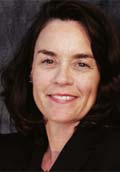International insurance: Connecting the dots
Assurex Global offers a winning combination of local presence and expertise
By Michael J. Moody, MBA, ARM
Time flies in today's global economy. Not long ago, concerns about international insurance programs were usually reserved for Fortune 500-type organizations. But now, many U.S. corporations have international risks and exposures that should be insured. "Just about everyone has some form of international exposure," notes John Rodwell, vice president of international business development at Assurex Global. "The days when companies just sold widgets across town have come and gone; now customers can come from anywhere around the world."
Thanks in large part to the Internet, he says, "Anyone that has a Web site that can be accessed worldwide has some international exposures." And while many businesses carry out activities that create risks significantly higher than managing a Web site, it does illustrate just how many organizations have global exposures, Rodwell points out.
That's one of the real problems, he notes, "Some people make the mistake of believing that international exposures must be grand in scale. But even something as small as having corporate executives traveling internationally is an exposure." Obviously, it does not take a large manufacturing plant in the Far East to qualify as an international exposure.
This newer, broader view of international risks requires a different approach from the broker's perspective as well. Kristine Furrer, senior vice president, risk management practice leader for Woodruff-Sawyer (an Assurex Global Partner), San Francisco, notes how this impacts their business, "We take the position that the client/prospect has international exposures unless it is determined otherwise." By taking this position, "We incorporate international into our normal client service plans," she says. For this reason, "We feel that Woodruff-Sawyer—and any Assurex Global firm for that matter— has a competitive advantage in this increasingly important area."
In trying to summarize Woodruff- Sawyer's approach, Furrer says, "We try to embed the international aspects into our core service team." As a result, "International is not a separate department, or even a separate conversation." Over time, "It has become part of our overall account review and recommendation process," she states.
Additionally, "We believe that generally, insurance professionals tend to be nervous about international risks and compliance issues," Furrer points out. As a result, "We have always made international a priority here." She says, "We want our people to have the tools and confidence to jump in and be good consultants to our clients with regard to international issues and to continue to differentiate ourselves as truly global insurance brokers."
Today, many companies have decided to move to a decentralized approach toward their international insurance program. Unfortunately for the insurance buyer, many insurance brokerages have also tended to separate "international" within their brokerages, which can lead to further inconsistencies in advice given and programs arranged. However, Furrer indicates, "This presents us with a real opportunity to set ourselves apart from other brokers." Regardless of the type of program the corporation may have, "They need to know that the risks are being covered consistently worldwide."
Culture club
Assurex Global provides an excellent example of how to successfully handle international insurance. The organization is comprised of a group of independent brokers, geographically located in more than 500 offices on six continents, Rodwell points out. And he says, "Collectively, client services are provided by over 18,000 insurance professionals worldwide." While Assurex Global was founded in 1954, it has been more recently that it has begun to focus its attention on international brokerage services, thanks in large part to the vision leading Partners within the organization.
Assurex Global itself is unique within the brokerage community. It is founded on the time-honored principles of the "independent agency system." In order to maintain this independent aspect, a formal evaluation process has been established for both current and prospective Partners, which is based on the following criteria:
• Premier market position
• Geographic location
• History of growth
• Breadth of service
• Commitment to other Assurex Global Partners
Each Partner is required to purchase shares in Assurex Global so that they have "skin in the game," notes Rodwell. He also points out that "the minimum and maximum of shares is closely monitored so that no one member can become a dominant player."
From the start, Assurex Global recognized that the culture of the independent broker was the best fit for Assurex since independent brokers typically had a more hands-on approach to account servicing and stronger ties to the local community than traditional "big box" agents. For the most part, Rodwell indicates,"Similar criteria are used for selecting both domestic and international partners as well." Overall, he notes, "This allows us to provide greater flexibility within the system, thereby leading to a keener focus on the client."
At the end of the day, this is what separates Assurex Global from others brokers and networks, "It's the commitment to the partnership network," notes Furrer. Assurex Global Partners "are an international team that is committed to compliance and best practices in each of the countries they work in." And she says, "We are only able to do this because we can count on great guidance from our network Partners." This is the thing that "allows us to put the correct program design together for each client."
Designing a "compliance and best practices" program on an international basis is the key. One of the initial concerns to be considered is determining if there are any "admitted versus nonadmitted" issues in the country in question, Furrer notes. She also points out, "Completely separate from the admitted issue are the compulsory coverage requirements of the country." The approach that Assurex Global takes is "to learn the client's risks, as well as their risk appetite, so we can properly determine which risks they want to insure." Once these decisions have been made, "We can than design an international program that complies with the client's needs and the requirements of the countries in which they operate. During this phase, we note any best practice issues and make sure we bring those to the attention of the buyer," so that they can provide input into the final program design.
Typically, the ultimate design of the international insurance program will highlight differences between the U.S. program and the international aspects. For example, Furrer says, "U.S. programs tend to have higher deductibles than those available in other parts of the world." Additionally, she also points out, policies available in other countries "may exclude numerous catastrophic perils." Among the perils that may be excluded are earthquake, flood, and hurricane. In light of recent losses in the Pacific Rim, these are critical coverages for any organization. When catastrophic coverage is excluded in the master policy, a determination must be made whether it is better to purchase additional coverage from a local pool or local market, or include it under a global master "DIC" program or both. It is times like these, Furrer notes, "that we definitely depend on input from our partners on the ground at the international locations."
Assurex Global's Partners' approach to international business, where they utilize the advice and counsel from their worldwide Partner network "is absolutely a two-way street," Furrer points out. Many U.S. Assurex Global Partners receive "reverse flow" business. "Because we do so much reverse flow business," Furrer explains, "we understand it from both angles; the local broker, as well as the controlling broker."
Conclusion
International insurance has changed dramatically over the past 15 to 20 years—including both the players in the international insurance arena (initially they were limited to Fortune 500 type companies), as well as the scope of risks involved. Today, worldwide business makes up a significant portion of many mid-sized companies' activities, and new and emerging risks are a frequent concern. For these reasons, insurance buyers are looking for brokers who can navigate the international waters to provide dynamic and flexible solutions. And while several big box brokers have international divisions, Rodwell notes that not everyone wants to be "a small fish in a large pond." Thus, with increasing frequency, buyers are turning to the partnership approach offered by Assurex Global to meet their international insurance challenges.
Recent worldwide catastrophic events serve as a reminder of the emerging importance of international insurance programs. From all outward appearances, it looks like expansion at an ever-increasing pace of international commerce will only continue, thus placing a premium on broker networks like Assurex Global that can provide these services.
|
|
| |
"We incorporate international into our normal client service plans." For this reason, "We feel that Woodruff-Sawyer—and any Assurex Global firm for that matter—has a competitive advantage in
this increasingly important area."
 — Kristine Furrer — Kristine Furrer
Senior Vice President, Risk Management Practice Leader
Woodruff-Sawyer & Co., San Francisco
|
| |
"Collectively, client services are provided by over 18,000 insurance professionals worldwide."
 —John Rodwell —John Rodwell
Vice President of International Business Development
Assurex Global
|
|